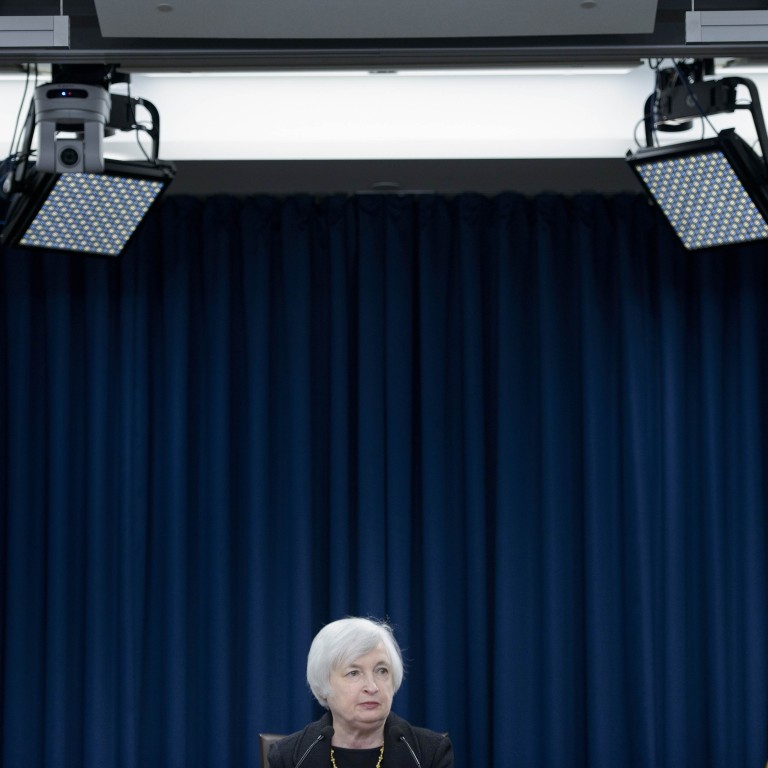
Fed indecision throws central banks’ woes into sharp relief
Last week, the US Federal Reserve surprised financial markets by issuing a significantly more dovish-than-expected statement justifying its decision to keep its benchmark interest rate on hold.
Until quite recently, the perception of a strongly dovish Fed would have buoyed equity markets, not to mention emerging markets (EMs) which bore the brunt of a sharp sell-off in the summer of 2013 just after the Fed signalled it would begin winding down, or “tapering”, its quantitative easing (QE) programme.
Yet last Friday, the day after the Fed opted to keep rates on hold, the benchmark US S&P 500 equity index fell 1.6 per cent, while eurozone shares tumbled 3 per cent. The selling continued this week, with the S&P 500 dropping a further 1 per cent between Monday and Wednesday, leaving it almost 2.6 per cent down from where it stood before the Fed decided to leave rates unchanged.
EM currencies, moreover, have benefited little from the Fed’s dovishness - quite the opposite. The Brazilian real and the South African rand, two vulnerable EM currencies, have lost a further 7.3 per cent and 4.6 per cent respectively against the dollar since the Fed’s decision.
Why would the prospect of a delay in the much-feared tightening in US monetary policy spook markets? Futures contracts now assign a less than 50 per cent probability to a rate hike by the end of this year, down from 65 per cent in mid-September.
Partly because of the Fed’s rationale for keeping rates on hold: a significant deterioration in global economic conditions which is exerting downward pressure on an already subdued US inflation rate.
The Fed was unexpectedly candid about China’s economic and policymaking woes - the focal point of market nervousness over the past several months.
Janet Yellen, the Fed chair, even went so far as to mention concerns about the “deftness” with which Chinese policymakers are addressing their country’s vulnerabilities.
This was the last thing jittery investors wanted to hear right now.
Not only has the Fed thrown the economic and financial vulnerabilities in the global economy into sharp relief, it has created the perception that it is reluctant to raise rates mainly because of concerns about China, prolonging the dithering in US monetary policy and accentuating the deterioration in sentiment.
More troublingly, the Fed has lost credibility in the eyes of many investors who would have preferred the certainty of a rate hike - albeit a dovish one which emphasised the gradual and cautious nature of subsequent tightening - to the uncertainty of a delay in the policy normalisation process.
As SLJ Macro Partners, a currency hedge fund, noted: “The markets and EM central banks were ready for a Fed rate hike, but the Fed was not.”
The Fed’s reluctance to hike rates and the negative reaction on the part of markets to its “dovish hold” show the extent to which the world’s leading central banks have become sources of volatility and uncertainty for investors.
The so-called “central bank put” - the belief on the part of investors that central banks’ policies are an unofficial guarantee of support whenever markets or the economy deteriorate sharply - is losing its credibility.
The Bank for International Settlements (BIS), the central bankers’ bank, has, for some time now, warned of the dangers and unintended consequences of central banks’ ultra-accommodative policies.
Claudio Borio, the head of BIS’s monetary and economic department, said earlier this month that “financial markets [had] worryingly come to depend on central banks’ every word and deed, in turn complicating the needed policy normalisation.”
There is now a growing sense among traders and investors that the distortive effects of central banks’ ultra-loose monetary policies - the manipulation of asset prices, resulting in financial markets becoming dangerously detached from economic fundamentals - not only contributed to the current problems in EMs but are making it much more difficult for central banks to exit their unconventional policies.
The lack of support from governments which are finding it extremely difficult to implement much-needed fiscal and structural reforms - policies which are far more effective in addressing the root causes of many economies’ ills but which require political support and take time to bear fruit - pose an increasingly acute dilemma for central banks.
Despite the limited effectiveness of monetary policy and the significant volatility it is now engendering, investors continue to hang on central bankers’ every word.
The problem is that their utterances are less and less reassuring.
Nicholas Spiro is managing director of Spiro Sovereign Strategy

